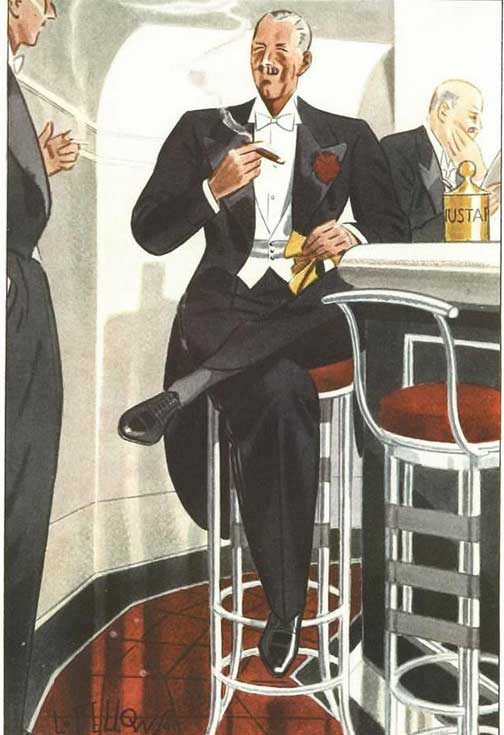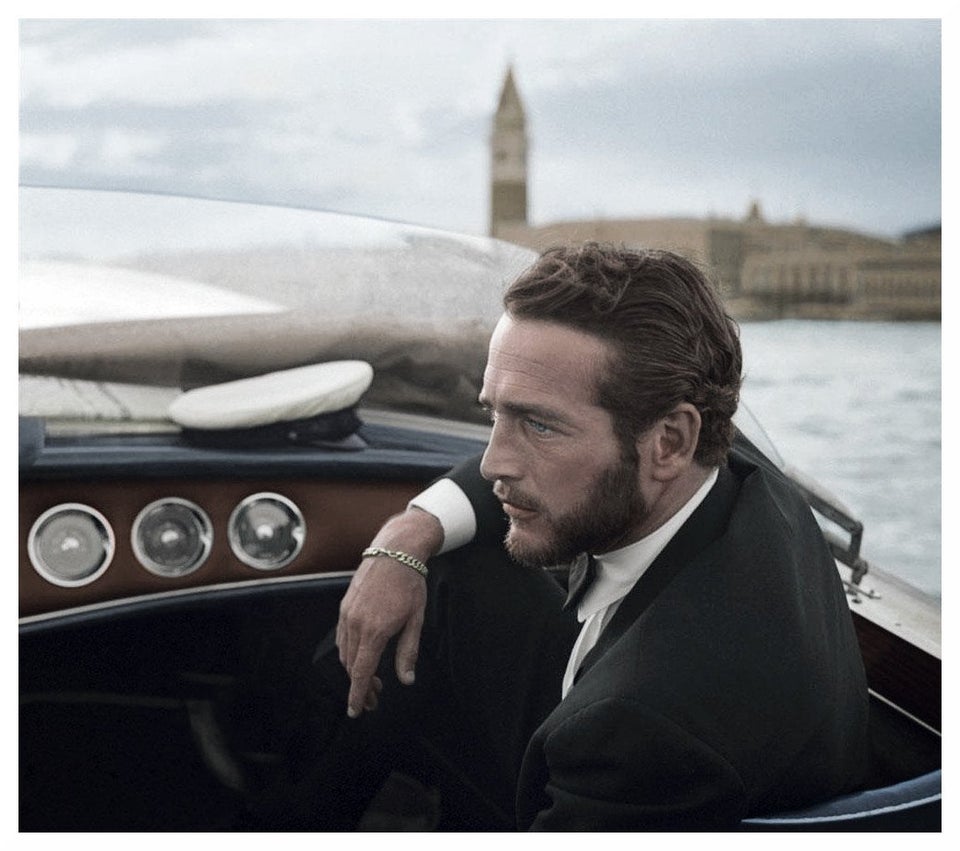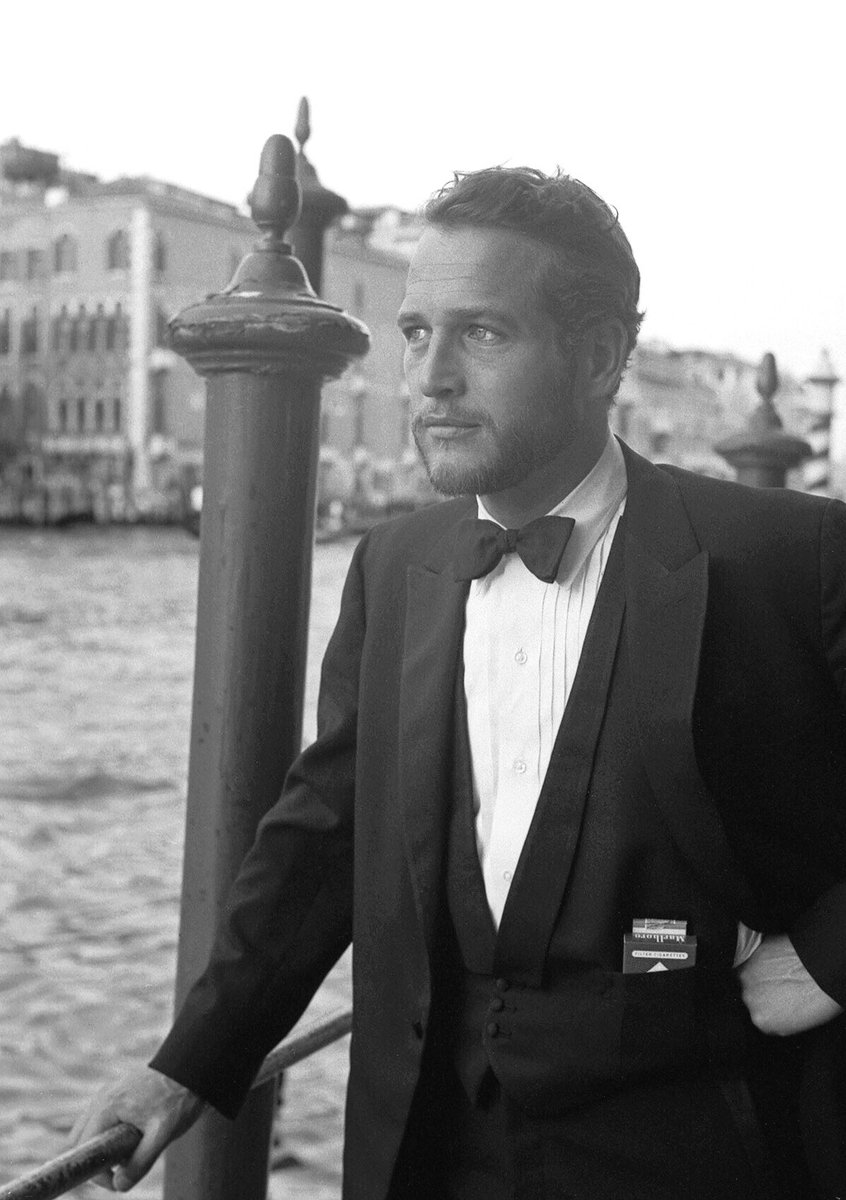1936 , February
SCENE: THE PALM BEACH CASINO AT CANNES
February 1936. This on-the-spot sketch of Riviera resort fashions, quite aside from its obvious decorative ping, has its uses as a check-up on prevailing plage fashions, because our southern resort fashions follow those of the Riviera almost as closely and as constantly as lunch follows breakfast. The figure in the left foreground is typical of the resort dress of fashionably informed Englishmen and Frenchmen. From pork pie hat to crocodile shoes, with grey and white flannel between. Note that the double-breasted jacket has only four buttons instead of the usual six, also that it carries welt pockets and side vents. The muffler is blue silk foulard with white spots, usually worn over a light-weight polo shirt. The background figure shows the Cannes-engendered white linen beach shirt with navy blue pirate's stripes, which opens all the way down the front, worn with blue linen beach slacks and canvas espadrilles.
Style details
- pork pie hat
- crocodile shoes
- grey and white flannel trousers
- four button double breasted jacket (usual six)
- welt pockets and side vents.
- the muffler is blue silk foulard with white spots,
- light-weight polo shirt.




